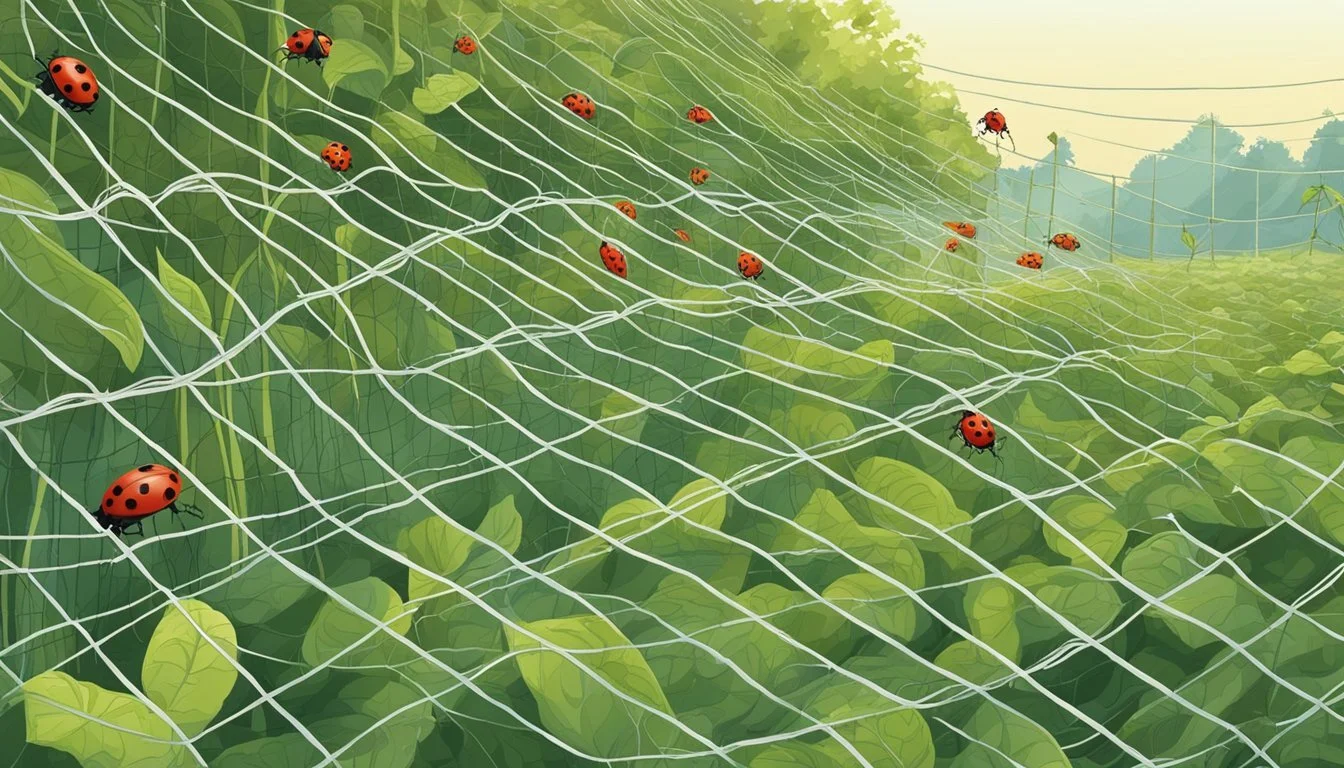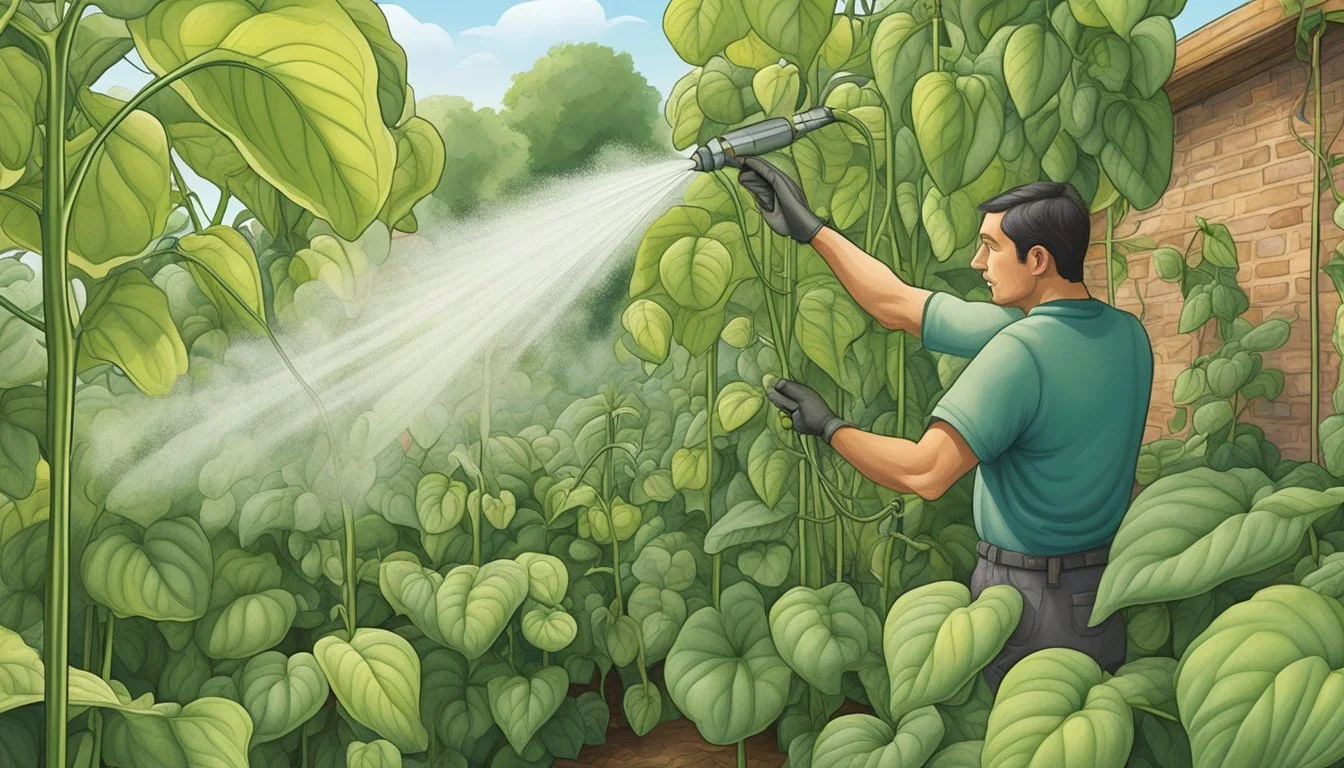Pest Control for Runner Beans
Effective Strategies for Healthy Crops
Gardening enthusiasts often choose runner beans for their vibrant flowers and bountiful harvests. However, achieving a successful crop requires vigilance against common pests that can jeopardize plant health and productivity. These pests range from aphids, which sap the energy from plants, to cutworms and spider mites that attack the foliage and stems. Effective pest control is critical to ensure that the beans thrive from planting through to harvest.
Timing is essential when planting runner beans, as the seeds are sensitive to cold, moist soil conditions, which can lead to stunting or failure to germinate. Proper spacing of the plants encourages good air circulation, which can minimize pest infestations. Once the plants are established, regular monitoring is necessary to identify any pest activity early on. This allows gardeners to take timely action to mitigate damage and maximize the yield of their runner beans.
Understanding Runner Beans
Runner beans, known scientifically as Phaseolus coccineus, are a staple in many gardens due to their high productivity and decorative flowers. Understanding their history, growing requirements and care will enable gardeners to cultivate a successful crop.
Origins of Phaseolus Coccineus
Phaseolus coccineus, commonly referred to as runner beans, originates from the mountains of Central America. They have been cultivated for both their edible beans and ornamental qualities. Central America provided the ideal environment for these beans to develop resilience and adaptability.
Ideal Growing Conditions
Runner beans thrive in conditions that offer full sun and abundant water. They prefer a soil temperature of at least 50°F to germinate effectively. To establish a robust runner bean crop, planting should occur in spring, well after the last frost to avoid cold damage.
Planting and Care
When planting runner beans, seeds should be sown at a depth of about 1 inch and spaced approximately 8 inches apart to allow for optimal growth. Regular watering is essential, and adding compost can dramatically improve soil quality. Supports, like a trellis, are necessary since runner beans are climbing plants.
Common Diseases in Runner Beans
These beans can be affected by plant diseases such as blight, halo blight, rust, mold, and mosaic virus. Anthracnose and brown spot can also plague runner beans. Prompt identification and intervention are critical to prevent the spread of these bean diseases.
Harvesting and Storage
Proper harvesting of runner beans involves picking the pods when they are young and tender. By doing so, plants will be promoted to produce more beans. For longevity, beans should be stored in a cool, dry place. Saved seeds can be overwintered, ensuring a personal seed stock for the next season.
Preventive Strategies
Effective pest management in runner beans starts with proactive measures to minimize the potential for infestations. Addressing environmental factors and employing physical controls can significantly improve the resilience of runner beans against pests.
Soil and Water Management
Proper soil and water management are foundational to preventing pest issues. Runner beans thrive in soil that is rich in organic matter. Incorporating compost can improve soil structure, moisture retention, and drainage, making it less conducive to pests that prefer stagnant water or overly dry conditions. Water the plants at the base to reduce leaf moisture, which can attract pests.
Companion Planting
Companion planting is a strategy that involves pairing runner beans with plants that can naturally repel pests or boost each other's growth. Planting marigolds near runner beans can help deter bean beetles and other pests due to the repellent compounds they emit.
Crop Rotation and Spacing
Implementing crop rotation breaks pest life cycles, reducing the risks of infestation in consecutive seasons. It's also important to adhere to proper spacing recommendations for runner beans, ensuring adequate air circulation which helps keep foliage dry and less attractive to pests.
Using Physical Barriers
Physical barriers such as row covers offer immediate protection against insects. For young plants, cut the bottoms off of large plastic bottles and place them over the seedlings to shield them without restricting growth.
Encouraging Beneficial Insects
Attracting beneficial insects like ladybugs and lacewings is a natural way to control pest populations. These predatory insects feast on common pests such as aphids and spider mites that might otherwise damage runner beans.
Organic Pest Control for Runner Beans
Organic pest management in runner beans focuses on identifying common pests and employing natural solutions and biological agents to maintain a healthy crop without synthetic chemicals.
Identifying Common Pests
Runner beans may be affected by various pests including ants, aphids (such as blackfly and greenfly), slugs, snails, caterpillars, Mexican bean beetles, thrips, Japanese beetles, spider mites, and loopers. The presence of these pests often manifests as damaged leaves, stems, or beans, sometimes accompanied by visible insects or their larvae.
Natural Pest Control Solutions
For effective organic pest control:
Soapy Water: A mixture of water and biodegradable soap can deter many soft-bodied insects like aphids and spider mites when sprayed directly.
Insecticidal Soap: Commercial organic insecticidal soaps are available that target a broader range of pests without harming the plant.
Neem Oil: This natural oil disrupts the life cycle of pests when applied as a foliar spray and is particularly effective against caterpillars and beetles.
For slugs and snails, physical barriers or traps filled with beer can reduce their numbers.
Biological Control Agents
Introducing beneficial insects such as ladybugs or lacewings can significantly reduce pest populations as they prey on aphids and other small insects. Planting companion plants that attract these beneficial insects can provide a long-term balance and ecosystem health for the runner beans.
Chemical Control Measures
When managing pests in runner beans, chemical control measures should be carefully considered for efficacy and safety. Pesticides are a common choice for immediate and targeted action against specific runner bean pests.
Insecticides: Control of aphids and other sap-sucking insects can be achieved through the application of insecticides. It is important to follow label instructions and adhere to pre-harvest intervals.
Sulfur or chlorothalonil: For diseases like rust, typically the fungal spores, chemicals such as sulfur or chlorothalonil can be effective when sprayed weekly during the appropriate growth stages of the bean plants.
Fungicides: Fungicides can prevent or reduce crop damage from fungal diseases.
Chlorothalonil: This fungicide should be used with caution as it is not suitable for all types of beans, such as lima beans. The interval between spraying and harvest is crucial to avoid residues on the harvest.
Proper Use: Always apply pesticides according to the manufacturer’s directions. Protective gear should be worn to prevent exposure, and applications should be timed to minimize impacts on non-target organisms and the surrounding environment.
Disposal: Dispose of any excess chemicals or containers in accordance with local regulations to prevent environmental contamination.
By adhering to these practices, growers can protect their runner bean crops from common pests while also safeguarding their health and the environment.
Frequently Asked Questions
This section addresses common inquiries about pest management for runner beans, focusing on identification, natural remedies, and prevention techniques.
What are common pests that affect runner beans and how can they be identified?
Common pests of runner beans include aphids, which are small sap-sucking insects that often cluster under leaves. Another pest is the cutworm, which generally attacks young plants at the stem near the soil surface. These pests are identifiable by their distinct damage patterns; aphids cause leaf curling and yellowing, while cutworms often cut down young plants.
What homemade solutions are effective for controlling pests on runner beans?
Homemade pest control solutions for runner beans include a spray made from diluted dish soap and water to target aphids, as well as garlic or chili-based sprays to deter a broad spectrum of pests. Applying a ring of dry multi-purpose compost around the plants can also be an effective deterrent against some pests.
How can neem oil be used in managing pest issues in runner beans?
Neem oil, a natural pesticide, can be applied to runner beans as a foliar spray to control numerous pests, such as aphids and cutworms. Effective management requires a regular application schedule, targeting all plant surfaces for full coverage.
Are there natural methods to prevent pest infestations in runner beans?
Natural pest prevention methods include introducing beneficial insects like ladybugs to eat aphids and practicing crop rotation to reduce soil-borne pathogens. Barrier methods, such as slug fences, can also reduce pest access to runner beans.
What steps can be taken to prevent runner bean damage from insect pests?
To prevent damage from insect pests, gardeners can monitor runner bean plants frequently, remove pests manually, and use barriers like netting to physically prevent pest access. Well-timed planting and maintaining plant health are also vital steps in preventing pest damage.
How can the spread of diseases in runner beans be identified and controlled?
To control the spread of diseases in runner beans, gardeners should look for signs of disease like spots on leaves or stems, wilting, and stunted growth. Disease management includes removing affected plants, avoiding waterlogged soil, and using disease-resistant runner bean varieties.






